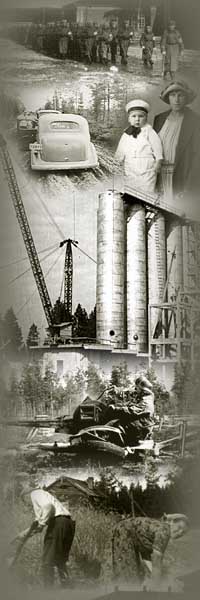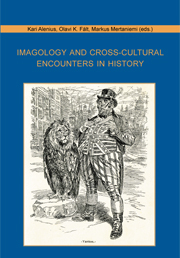 |
 |
|
|
Studia
Historica Septentrionalia
56 |
|
|
Kari Alenius, Olavi K. Fält, Markus Mertaniemi (toim.),
Imagology and cross-cultural encounters in history.
Pohjois-Suomen Historiallinen
Yhdistys, Rovaniemi 2008, 323 s, mv-kuvitus.
|
 |
The Department of History at the University of Oulu in Finland
organized the Conference on Imagology and Cross-cultural Encounters
in History on August 29–31, 2007. The papers presented at the
conference are published here. The purpose of the conference was
firstly to consider utilization of an imagological viewpoint in the study
of history in general. The themes included national and international
symbols, persons and groups of people, but also images, as explaining
factors in political and economic decision-making.
Secondly, the conference examined interaction between cultures,
because it has always been apparent how difficult it is to understand
others and dissimilarity. Images of others and dissimilarity are
similar to a biological territory that protects one’s own species. The
purpose of the conference was to shed light on these problems through
examples from different ages, which provide an additional perspective
in examining corresponding phenomena today. If we understand the
processes related to images, we can also understand ourselves better.
Sisällysluettelo:
1. Theoretical Perspectives on Imagology and History
A.W. Johnson, Imagology, Literature, and the Writing of History:
Shakespeare’s Tempest and the Iconospheres of Prospero’s Books
Juho Mikkonen, Historical Imagology and the Modern Press
Olavi K. Fält, Theoretical roots of the study of historical images
2. Early Images of Others and Authority and Their Effect on Later Images
Marika Rauhala, The Greek Mother of Gods – No Model for Mortals?
Markus Mertaniemi, Values of Hatred: Rhetoric and Image of
Christianity Before and During the Great Persecution 303 – 312 AD
Maijastina Kahlos, Bene currunt, sed in via non currunt. The Image of
Good Pagans in fourth- and fifth-century Christian Literature
Päivi Collander, Romans Depictions and Political Perspective on the
Huns as “Others” in Late Antiquity
Inka Moilanen, Literary Parallels between Heavenly and Earthly
Authorities in Early Medieval West
Timo Sironen, A model in ethnic depiction – created 2000 years ago and
adapted in 1684 on Lapps
3. Images as Tools in the Reconstruction of National and Social Identities in
17th – 19th Centuries
Esko Nevalainen, The Scottish National Covenant as a Symbol and the
Identity of the Scottish Covenanters
Jarmo Pulkkinen, Frederick II of Prussia and the Clockwork State
Marko Junkkarinen, Images on Socio-Ethnic Groups in Robert
Morris’s Worldview
Marja Vuorinen, Contact Becomes Conflict: Nobility as a
Counter-Image of the Aspiring 19th Century Bourgeoisie
Kati Parppei, Myths, Legends and Politics. The Formation of the
Historiographical Image of the Monastery of Valaam
Karin Hiiemaa, The Image of Africa in Estonian Printed Word
Andreas Lawaty, ”Germanic“ and ”Slavic“ as Concepts of German and
Polish National Discourses
Jyrki Outinen, Negotiating Others: The Image of the Turk in the Finnish
Soldiers’ War Memoirs of the Russo-Turkish War in 1877 – 1878
4. Images of Class, Gender, and Enemy in 20th Century Imagination
Veronika Sušová, Images of Domination: Representations of Ethnic
Hierarchies in Russian Geography Textbooks in 1875 – 1918
David Ratz, The Early Image of Finland in Canada
Raita Merivirta-Chakrabarti, “Good heroic Irish men and nasty, brutal
British people”?: the Image of the British (and the Irish) in Irish Film
Tiina Lintunen, Images of Woman Enemies
Nina Työlahti, The New Woman – a Joint Venture? A Rebellious Image
as a Cross-cultural Perception
Jan Záhoøík, Before the War: Creating an Image of Ethiopia in Fascist
Italy and Contemporary Europe
5. Transformations of Images in Recent History
Kari Väyrynen, ‘Ecological Wisdom’ of Eastern Philosophy – Critical
Perspectives
Tuula Okkonen, Successful Abandonment of the Image of the Enemy
and the Reorientation of the Japanese
Henry Oinas-Kukkonen & Mikko Myllykangas, 15 Years of
Transformations of ‘Oulu Phenomenon’ as a Symbol, 1988 – 2002
Kari Alenius, ”Dishonest Estonians bear the responsibility for the
failure”. The image of the Estonian-Russian border negotiations in 2005
conveyed by Nezavisimaya Gazeta
|
 |